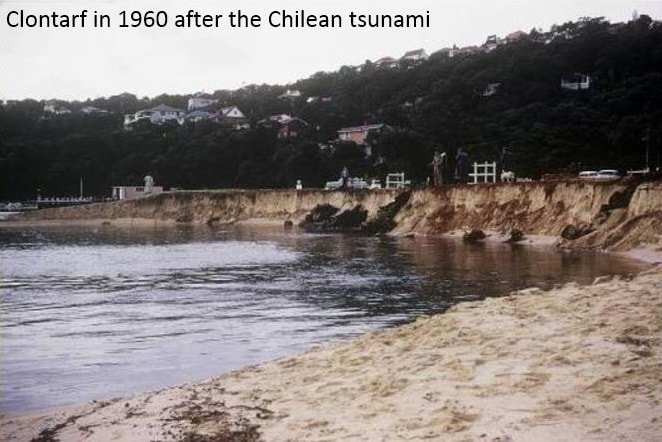Could Sydney be hit by a tsunami? New study released today

THE TSUNAMI THREAT TO Australia is under-researched and needs to be taken seriously, according to scientists who today published a first-of-its-kind study looking at the risk of a tsunami inundating Sydney Harbour.
Using a 3D map of the land and ocean floor around Sydney Harbour, the researchers modelled different scenarios, including earthquakes with magnitudes ranging from 7.5 to 9 and potential zones from which a tsunami could originate. For example, a tsunami that originated at the Puysegur Trench, a subduction zone south of New Zealand, could reach Sydney in about two hours.
Were such an event to occur, the researchers’ modelling found that potential impacts could include dangerous whirlpools east of the Spit Bridge on Sydney’s lower north shore, as well as serious coastal erosion impacting infrastructure, strong currents and rapid water movement posing a threat to swimmers, fishers and boaters, and possibly threatening those near the water too.
‘Significant and unpredictable tide’
“Hollywood sells us images of huge walls of water and engulfing waves, but in fact we’d be looking at something more like a significant and unpredictable tide moving in and out in minutes rather than hours,” said Dr Hannah Power, project leader and coastal geoscientist from the University of Newcastle, NSW.
“Some of the larger events we’ve modelled could cause rapid current speeds of up to eight metres per second, becoming dangerous very quickly,” she said. “For context, an Olympic swimmer might swim two metres per second at their fastest.”
Not only is the risk of such an event real – it has happened in living memory. The magnitude 9.5 earthquake that struck Chile in May 1960 “caused major disruption to Sydney Harbour,” said PhD candidate at the University of Newcastle, Kaya Wilson, who was lead author on the paper.
“We could expect a tsunami of a similar size in the Harbour once every 50 to 100 years,” he said.


Images courtesy University of Newcastle.
‘Two-metre tsunami would be devastating’
In their modelling, the researchers looked at scenarios ranging in likelihood from “1 in 20-year” events to more major “one in 5000-year events”, but pointed out that the wording of this likelihood can be misleading – a one-in-20-year event doesn’t necessarily happen once every 20 years, instead there is a one-in-20 chance it will happen in any given year.
Misreporting and ignorance around the nature and impact of tsunamis can also lead to further risk, said Hannah. “If you think about a two-metre swell, we wouldn’t feel the need for concern, however a two-metre tsunami would be devastating,” she explained.
“We need to put the risk in context for the general public, so that when we receive alerts warning of a potential tsunami threat, people take it seriously and act safely. That means following the instructions and warnings from our emergency services as advised, rather than trying to witness the event.”
The researchers hope the findings will raise public awareness and inform evacuation and preparation planning. They would also like to apply their modelling to their own backyard in Newcastle on the NSW central coast, and ultimately to more of Australia and higher-risk locations overseas.
The study is published in the journal Scientific Reports.

